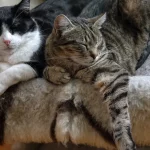What to Know About Bengal Cats: Fascinating Facts Revealed
Bengal cats are known for their striking leopard-like appearance and high energy levels. They are intelligent and playful pets.
Bengal cats have a unique appearance, resembling wild leopards with their distinctive coat patterns. Their fur is short, soft, and often glimmers in the light. These cats are highly active and require plenty of physical and mental stimulation. They enjoy interactive play, climbing, and exploring their surroundings.
Bengal cats are also intelligent and can be trained to perform tricks or walk on a leash. They are generally social and get along well with other pets and children. Prospective owners should be prepared for their high energy and need for engagement to keep them happy and healthy.
Origin And History
Bengal cats are unique and fascinating animals. Their origin and history are equally interesting. Understanding their background can help you appreciate these beautiful cats even more.
Wild Ancestry
The Bengal cat has a wild ancestry. They are descended from the Asian leopard cat (Prionailurus bengalensis). This wild cat roams the forests of Asia. The Asian leopard cat has a striking coat with spots and rosettes. It resembles a miniature leopard.
In the 1960s, breeders became interested in this wild cat. They wanted to combine its exotic look with the temperament of a domestic cat. This idea gave birth to the Bengal cat breed. The goal was to create a cat that looked wild but was safe and friendly.
Breeding Beginnings
The breeding of Bengal cats began in the early 1970s. Jean Mill, an American breeder, played a key role. She crossed an Asian leopard cat with a domestic cat. This first generation was called “F1” hybrids.
The F1 hybrids were bred with domestic cats. This process continued over several generations. By the fourth generation, the kittens were considered Bengal cats. These cats had the wild look but a domestic temperament.
Today, Bengal cats are popular pets. Their unique coat and lively personality attract many cat lovers. They are known for their intelligence and playful nature.
| Generation | Description |
|---|---|
| F1 | First generation, Asian leopard cat crossed with domestic cat |
| F2 | Second generation, F1 hybrid crossed with domestic cat |
| F3 | Third generation, F2 hybrid crossed with domestic cat |
| F4 | Fourth generation, considered true Bengal cats |
Understanding the origin and history of Bengal cats helps you see why they are special. Their wild ancestry and careful breeding make them unique pets. They combine the beauty of the wild with the friendliness of domestic cats.
Physical Characteristics
Bengal cats are known for their stunning appearance and wild looks. These cats have unique features that make them stand out. Learn about their distinctive coat patterns, size, and build.
Distinctive Coat Patterns
Bengal cats have a coat that resembles a wild leopard. Their fur is silky, soft, and short. The most notable feature is their distinctive coat patterns. These patterns include:
- Spotted: Spots are randomly placed and can vary in size.
- Marbled: Swirling patterns that look like marble.
- Rosetted: Spots with a darker outer ring, resembling a rosette.
These patterns add to the exotic look of Bengal cats. Their coats also have a glitter effect, making them shine in the light.
Size And Build
Bengal cats are medium to large in size. They have a muscular build, which gives them an athletic appearance. Here’s a breakdown of their size:
| Gender | Weight | Length |
|---|---|---|
| Male | 10-15 lbs | 16-18 inches |
| Female | 8-12 lbs | 14-16 inches |
Bengal cats have strong legs and a sleek body. Their tails are thick, with rounded tips. Their heads are small compared to their bodies, with large, expressive eyes. These physical traits make Bengal cats agile and powerful.
Personality Traits
Bengal cats are known for their unique personality traits. These cats are energetic, intelligent, and curious. They add a lively presence to any household. Understanding their personality traits helps in providing them a suitable environment.
Playful Nature
Bengal cats have a highly playful nature. They love to engage in various activities. A Bengal cat can turn any object into a toy. They enjoy chasing, jumping, and climbing. Their playful nature means they need lots of stimulation. Providing toys and interactive games keeps them happy. They also enjoy playing with their owners. This interaction strengthens the bond between the cat and its owner.
Intelligence
Bengal cats are among the most intelligent cat breeds. They quickly learn new tricks and commands. Their intelligence also means they can solve problems. Puzzle toys are great for stimulating their mind. Bengals can even learn to open doors and cabinets. This intelligence requires owners to be creative. Keeping them mentally stimulated prevents boredom. Engaging their brains keeps them healthy and happy.
| Personality Trait | Description |
|---|---|
| Playful Nature | Highly energetic and loves to play. |
| Intelligence | Quick learners and problem solvers. |
Health And Lifespan
Bengal cats are known for their playful nature and striking appearance. Understanding their health and lifespan can help ensure they live a happy life. This section delves into common health issues and life expectancy for these beautiful felines.
Common Health Issues
Bengal cats, like all breeds, can face specific health problems. Here are some common issues:
- Hypertrophic Cardiomyopathy (HCM): This heart disease causes the heart walls to thicken.
- Progressive Retinal Atrophy (PRA): This eye disorder leads to blindness.
- Patellar Luxation: A condition where the kneecap dislocates.
- Feline Infectious Peritonitis (FIP): A viral disease that can be fatal.
Regular vet check-ups can help detect these issues early. Keeping an eye on your Bengal’s health is crucial.
Life Expectancy
Bengal cats typically live between 12 to 16 years. Their lifespan can be influenced by various factors:
| Factor | Impact |
|---|---|
| Diet | A balanced diet ensures good health and longevity. |
| Exercise | Regular playtime keeps them fit and active. |
| Genetics | Healthy breeding practices reduce genetic disorders. |
| Environment | A safe, stress-free home promotes a longer life. |
Providing a loving home and proper care can help your Bengal cat thrive. Ensure they receive the best care to maximize their lifespan.
Care Requirements
Bengal cats are beautiful and energetic pets. They have unique care needs. Proper care ensures they stay healthy and happy. Below, you’ll find key information on diet, nutrition, and grooming needs for Bengal cats.
Diet And Nutrition
Bengal cats need a high-protein diet. They are active and burn calories fast. A diet rich in meat is essential. Here is a simple breakdown of their diet:
- Protein: 40-50% of their diet
- Fats: 20-30% of their diet
- Carbohydrates: Less than 10% of their diet
Feed them high-quality dry or wet cat food. Look for food labeled for active cats. Avoid fillers like corn and soy. Fresh water should always be available.
Grooming Needs
Bengal cats have short, sleek fur. They do not shed much. Here are their grooming needs:
| Grooming Task | Frequency |
|---|---|
| Brushing | Once a week |
| Bathing | Once a month or as needed |
| Ear Cleaning | Once a month |
| Nail Trimming | Every 2-3 weeks |
Use a soft brush for their fur. Regular brushing keeps their coat shiny. Bathing helps remove dirt and oil. Clean their ears with a vet-approved solution. Trim their nails to prevent scratches.
By following these steps, your Bengal cat will stay healthy and happy. They will be a delightful addition to your family.
Living Environment
The living environment of a Bengal cat is crucial for their well-being. Bengal cats are energetic and curious. They need a stimulating environment to thrive. This section will help you understand how to create the best living space for your Bengal cat.
Indoor Vs. Outdoor
Bengal cats can live both indoors and outdoors. Each environment has its pros and cons. Indoor living is safer and reduces the risk of accidents or diseases. Your cat will be protected from cars, predators, and harsh weather. An indoor environment also allows more control over their diet and health.
Outdoor living provides more natural stimulation. Your Bengal cat can explore, climb trees, and chase insects. This can make them happier and more active. But outdoor living has risks. They could get injured, lost, or contract diseases. It’s essential to weigh these pros and cons before deciding.
Space And Enrichment
Bengal cats need plenty of space and enrichment to stay happy. They are active and love to climb, jump, and explore. Make sure your home has enough space for these activities. Large rooms and vertical spaces are ideal.
Enrichment is key to keeping a Bengal cat entertained. Provide various toys, scratching posts, and climbing trees. Interactive toys can keep them mentally stimulated. Rotate the toys to keep their interest alive. You can also create a cat-friendly environment with hiding spots and tunnels.
Consider adding a window perch for your Bengal cat. They love watching birds and other outdoor activities. This can keep them entertained for hours. A window perch also provides a cozy spot for them to relax and nap.
| Indoor | Outdoor |
|---|---|
| Safer environment | Natural stimulation |
| Controlled diet | More exercise |
| Protection from predators | Risk of injuries |
| Less disease exposure | Exposure to harsh weather |
By understanding these factors, you can create the best living environment for your Bengal cat. A mix of safety, space, and enrichment will keep them healthy and happy.
Training And Socialization
Bengal cats are known for their intelligence and playful nature. Proper training and socialization are crucial for a happy, well-behaved Bengal. Let’s explore some essential aspects of training and socializing your Bengal cat.
Litter Training
Litter training your Bengal cat can be straightforward. Here are some key steps:
- Choose a spacious litter box.
- Use high-quality, unscented litter.
- Place the litter box in a quiet area.
- Show your cat the litter box after meals.
- Reward your cat with treats and praise.
Consistency is key in litter training. Clean the litter box regularly to avoid any unpleasant odors.
Social Interaction
Bengal cats thrive on social interaction. They are social animals who enjoy human company and playtime. Here are some tips for socializing your Bengal:
- Spend quality time playing with your cat daily.
- Use interactive toys to keep them engaged.
- Introduce them to new people gradually.
- Provide scratching posts and climbing trees.
- Consider getting another pet for companionship.
Bengal cats are curious and energetic. They love exploring and engaging in activities. Social interaction keeps them happy and mentally stimulated.
Buying And Adoption
Thinking about getting a Bengal cat? This guide will help you decide between buying from a breeder or adopting. Each choice has its own benefits. Below, you’ll find tips to make the best decision for your family.
Choosing A Breeder
Choosing a breeder is crucial. Look for breeders who prioritize the health and well-being of their cats. They should provide health certificates and vaccination records. Visit the breeder’s facility if possible. Check for clean, spacious living conditions.
- Ask about the cat’s parents.
- Request to see medical records.
- Ensure the breeder is registered with a recognized cat association.
A reputable breeder will ask you questions. They want to ensure their kittens go to good homes. This is a sign they care about their cats.
Adoption Tips
Adopting a Bengal cat can be rewarding. Many cats need loving homes. Visit local shelters or Bengal cat rescue organizations. They often have cats of all ages available for adoption.
- Check online listings for Bengal cat rescues.
- Prepare your home for a new pet.
- Ask about the cat’s history and behavior.
Adoption fees are usually lower than buying from a breeder. This can make adoption an affordable choice. Many adopted cats come already spayed or neutered. This saves you time and money on vet visits.
Whether you buy or adopt, a Bengal cat can be a wonderful addition to your family.
Frequently Asked Questions
What Is A Bengal Cat?
A Bengal cat is a domesticated breed known for its wild appearance.
Are Bengal Cats Friendly?
Yes, Bengal cats are generally friendly and social with humans.
How Big Do Bengal Cats Get?
Male Bengals typically weigh 10-15 pounds; females weigh 8-12 pounds.
Do Bengal Cats Shed A Lot?
Bengal cats have a short coat and shed minimally.
Are Bengal Cats Hypoallergenic?
No, Bengal cats are not hypoallergenic, but they may cause fewer allergies.
How Long Do Bengal Cats Live?
Bengal cats have an average lifespan of 12-16 years.
Do Bengal Cats Need Special Care?
Bengal cats require regular grooming, a balanced diet, and mental stimulation.
Are Bengal Cats Good With Kids?
Yes, Bengal cats are usually good with children and enjoy playing.
Do Bengal Cats Get Along With Other Pets?
Bengal cats generally get along well with other pets if introduced properly.
How Much Do Bengal Cats Cost?
Bengal cats typically cost between $1,000 and $3,000 depending on quality and lineage.
Conclusion
Bengal cats offer a unique blend of wild looks and affectionate nature. They require active play and mental stimulation. Proper care ensures a healthy, happy pet. Considering their needs can lead to a rewarding companionship. Understanding their traits helps in making informed decisions.
Bengal cats can be a delightful addition to your family.




